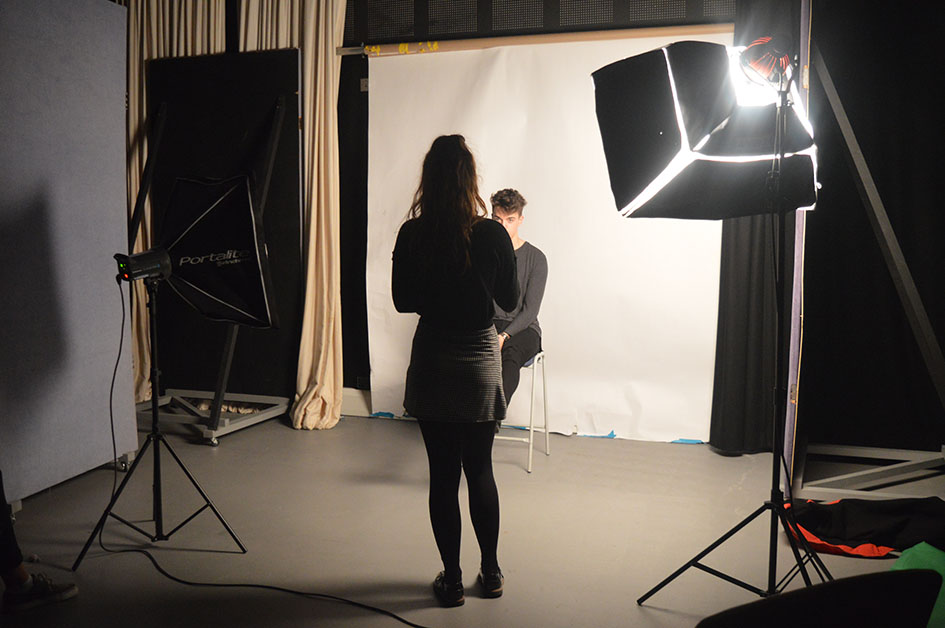
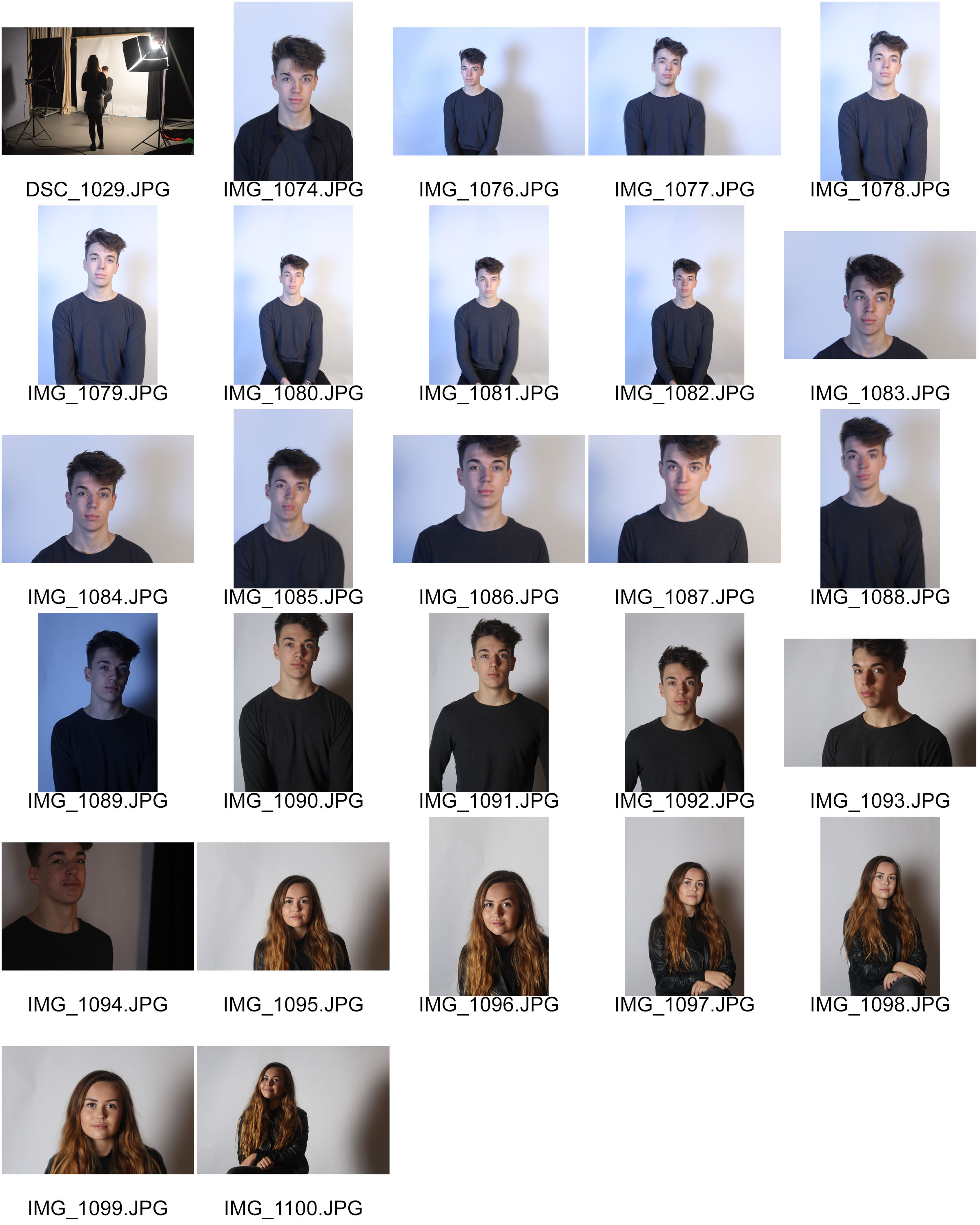
Editing
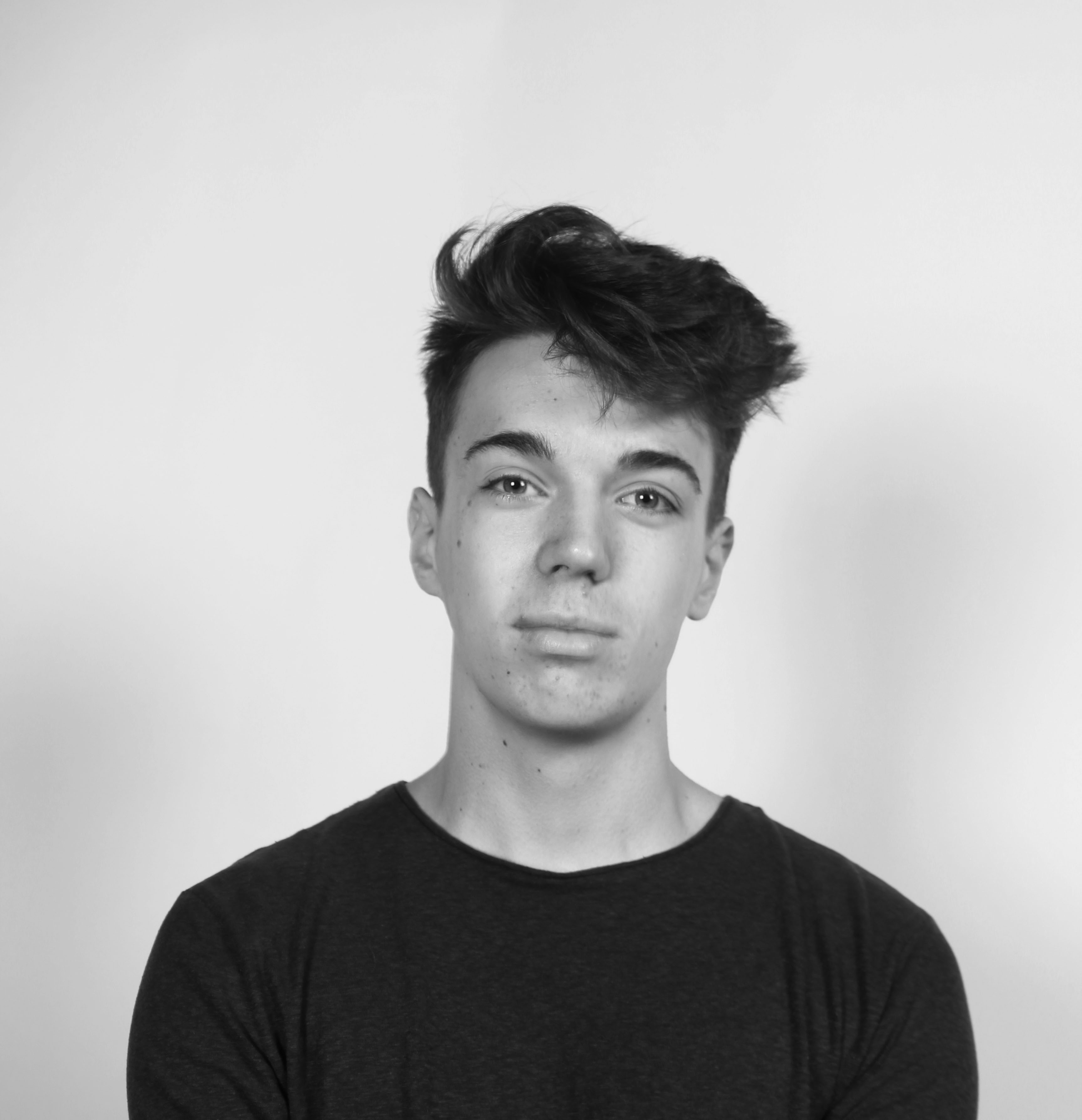

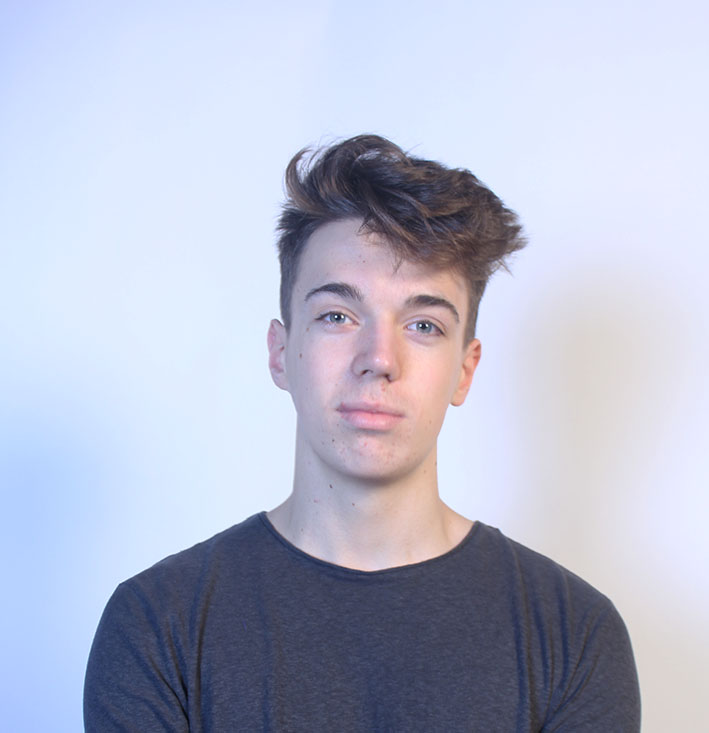





High–key lighting is a style of lighting for film, television, or photography that aims to reduce the lighting ratio present in the scene. This was originally done partly for technological reasons, since early film and television did not deal well with high contrast ratios, but now is used to suggest an upbeat mood.
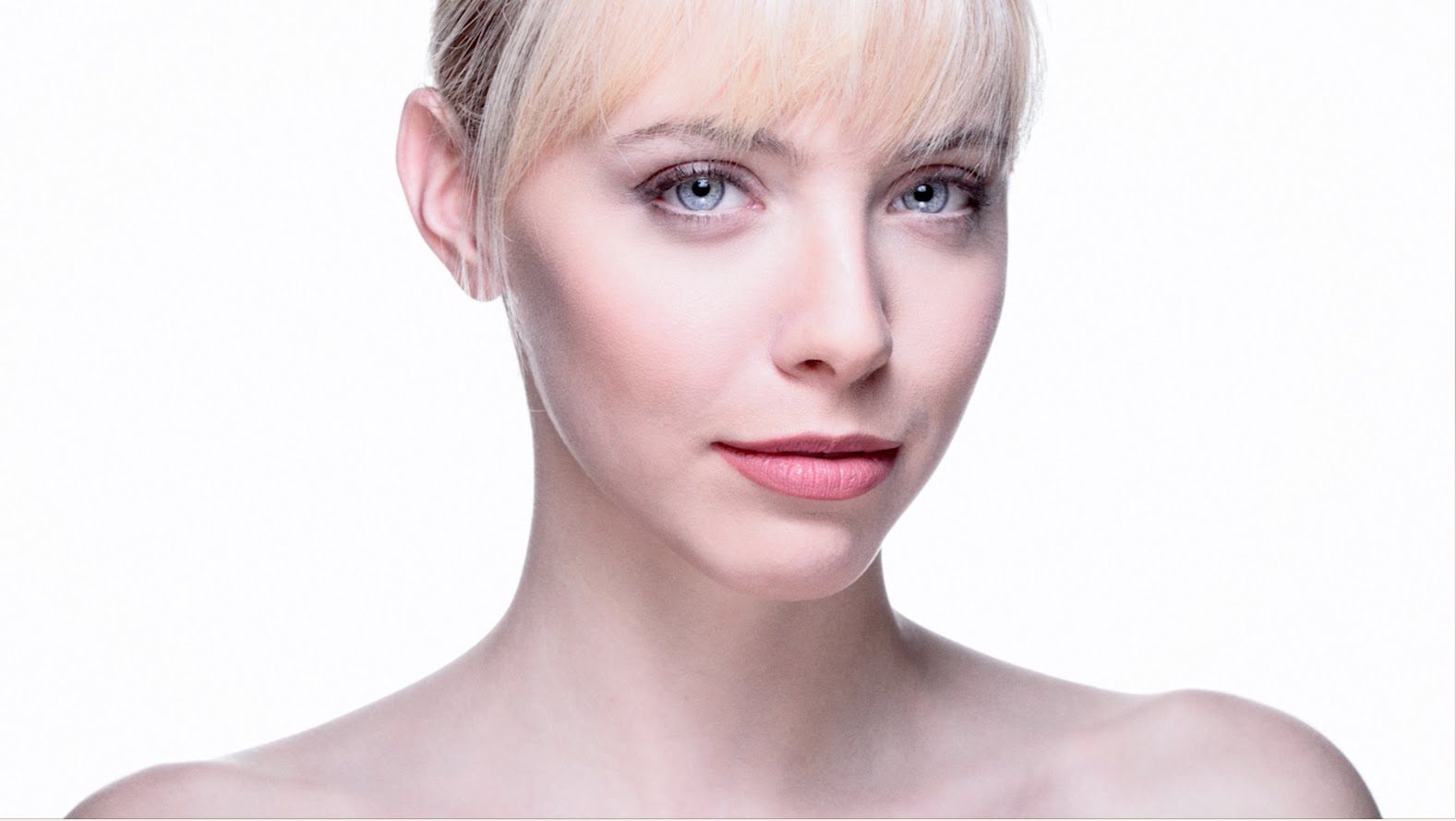
Low–key lighting is a style of lighting for photography, film or television. It is a necessary element in creating a chiaroscuro effect. Traditional photographic lighting, three-point lighting uses a key light, a fill light, and a back light for illumination.

These are my examples of high and low key lighting. the image of the left is very dark and a very loft light has been used to take this image whereas the photo on the right is a very bright nearly over exposed due to a very bright harsh light source.
Standard setup:

How do the three lights affect a photograph?

Butterfly lighting is also known as Paramount lighting. It became a well Known technique used in Hollywood in the 1930’s. This lighting is characterized by the butterfly-shaped shadow that it casts below the nose. It is produced by placing the light source above the face and in line with the direction in which the face is pointing.
Here is an example of Butterfly Lighting. You can see the Butterfly shaped shadow just bellow the nose.
Loop lighting, which is named for the loop-shaped shadow that it creates under the nose, is the most frequently-used pattern. It is considered to be a relatively flattering and adaptable pattern that lights most of the face while imparting a sense of depth.
In loop lighting, we want a slightly downward angled shadow so we raise the light slightly above eye level. We want the end of the nose to cast a rounded–looped–shadow down from the nose to around the corner of the mouth or even a bit shorter.
Here is an example of Loop Lighting. You can see the small Loop shaped shadow produced under the nose.The shadow goes off to the side; it is not directly under the nose. The area between the upper lip and the nose remains light. It creates a three dimensional feel to the image.




Best Photograph: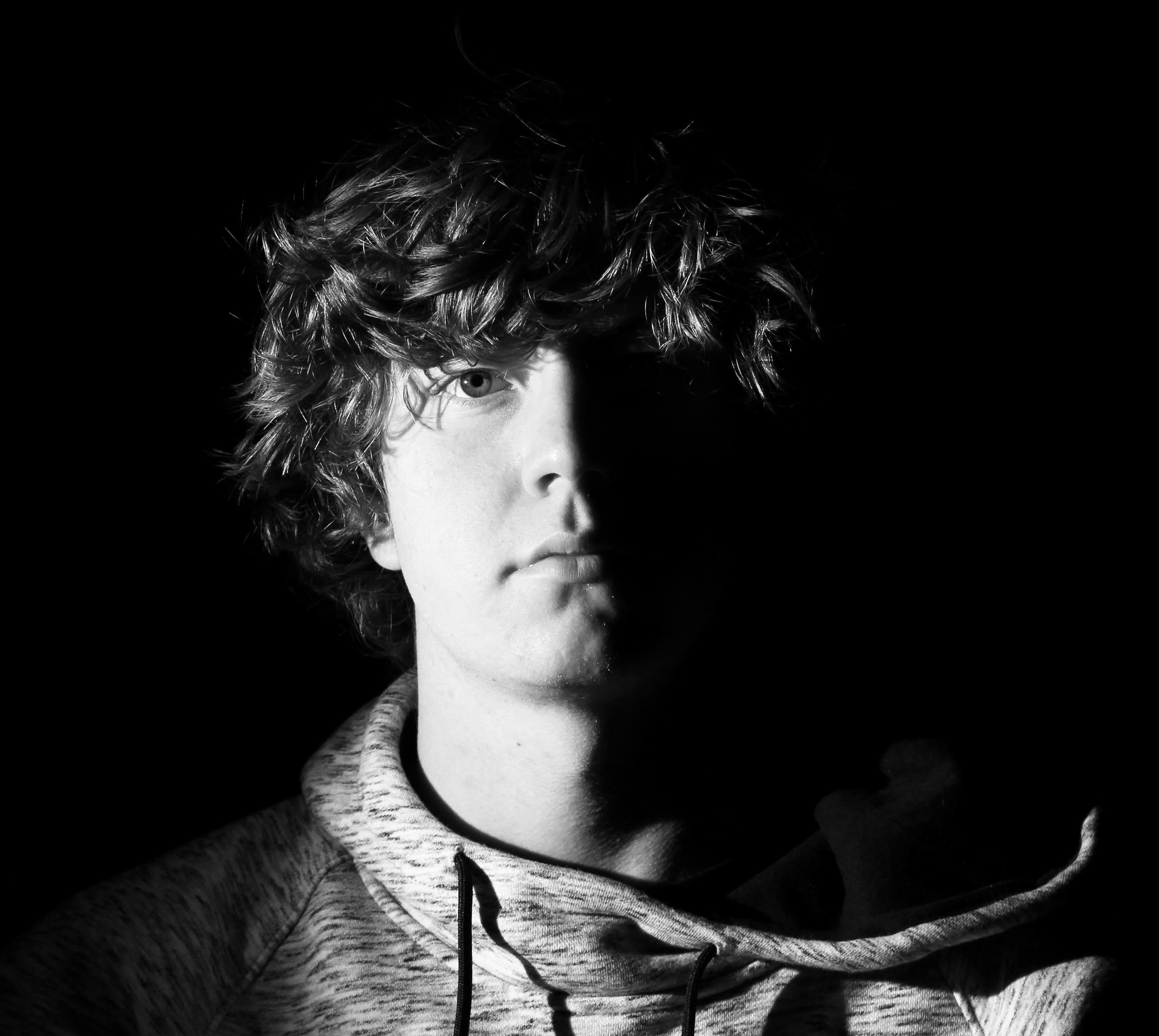
Here I used one point lighting to create a chiaroscuro effect. I like how the dark tones created by the shadows enhance the brightness of the face. I enhanced this effect by increasing the brightness and contrast on the photograph. Interestingly, what I particularly like about the chiaroscuro effect is that the fact there is no backing/fill lighting or any other forms of supporting light making the object feel at one with his background apart from his face. This gives the photograph a mysteriousness that makes the object appear quite isolated as half his face is only projected where the other half is dark. This makes him appear that there is a certain feeling inside of the object that makes him feel upset inside but suggests he isn’t comfortable expressing it. On the light source, I adjusted the dimmers at the front to pinpoint the light so the object would be fully illuminated and nothing else. This is effective because I wanted to focus on the object and let the viewer not feel distracted by the shadows, but use the shadows to compliment the background subtly.
Developed from the renaissance. Artists known for developing the technique include: Leonardo Da Vinci, Caravaggio and Rembrandt from oil paintings. This technique also may be termed “ambient/natural lighting” for photography. “Chiaro” means light, “scuro” means dark. This means we can use Chiaroscuro to enhance the dark and lighter areas. Here is a common setup for Chiaroscuro lighting:

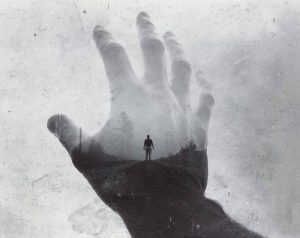
You can explore Adobe Photoshop and Adobe Bridge.
You can explore manual editing techniques….like this

You can experiment with a range of presentation ideas.
You can exploit a range of editing apps and Instagram filters.
Use your own photographs !!!
By the end of the week you should have 3-5 carefully edited responses…
What is butterfly lighting?
Butterfly lighting is one of the oldest techniques for lighting a subject. Named for the butterfly-shaped shadow that forms underneath the subject’s nose, this setup is a proven method to ensure your subject is well-lit in a pleasing manner. Butterfly lighting, also known as Paramount lighting, became a staple pattern for the Hollywood photographers of the 1930s. It is produced by placing the light source above the face and in line with the direction in which the face is pointing.

What is loop lighting?
Loop lighting, which is named for the loop-shaped shadow that it creates under the nose, is the most frequently-used pattern. It is considered to be a relatively flattering and adaptable pattern that lights most of the face while imparting a sense of depth. It is produced by placing the main light above the face and to the right or left of the direction in which the face is pointing.

What is spill light?
Spill light or light trespass is the light that illuminates surfaces beyond the property line. An example is the light on a bedroom wall coming through the window.

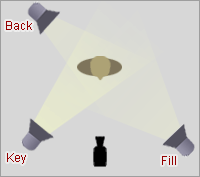 Three-point lighting is a standard method used in media such as theatre, video, film, still photography and computer-generated imagery. By using three separate positions, the photographer can illuminate the shot’s subject (such as a person) however desired, while also controlling the shading and shadows produced by direct lighting.
Three-point lighting is a standard method used in media such as theatre, video, film, still photography and computer-generated imagery. By using three separate positions, the photographer can illuminate the shot’s subject (such as a person) however desired, while also controlling the shading and shadows produced by direct lighting.
The main light is usually the strongest and has the most influence on the look of the scene. It is placed to one side of the camera/subject so that this side is well lit and the other side has some shadow.
The secondary light is placed on the opposite side of the key light. It is used to fill the shadows created by the key. The fill will usually be softer and less bright than the key.
The back light is placed behind the subject and lights it from the rear. Unlike the other two, its purpose is to provide definition and subtle highlights around the subject’s outlines. This helps separate the subject from the background and provide a three-dimensional look.
My Photoshoot:
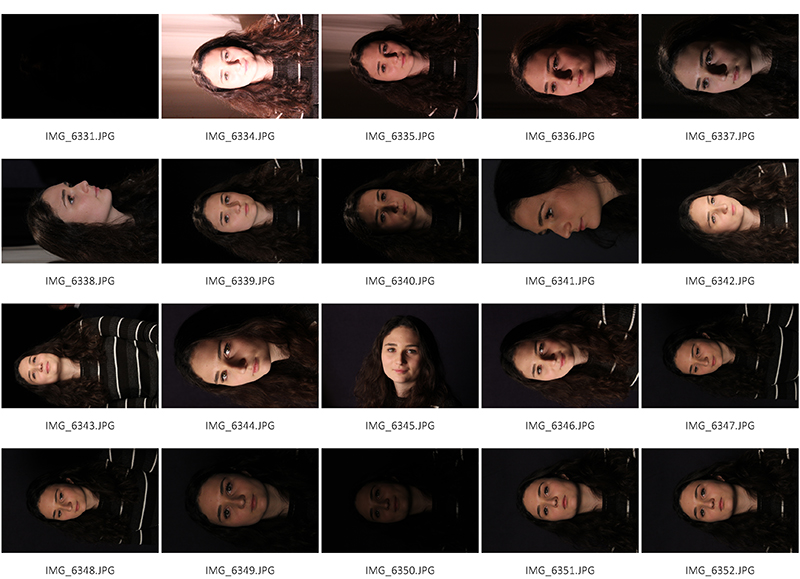
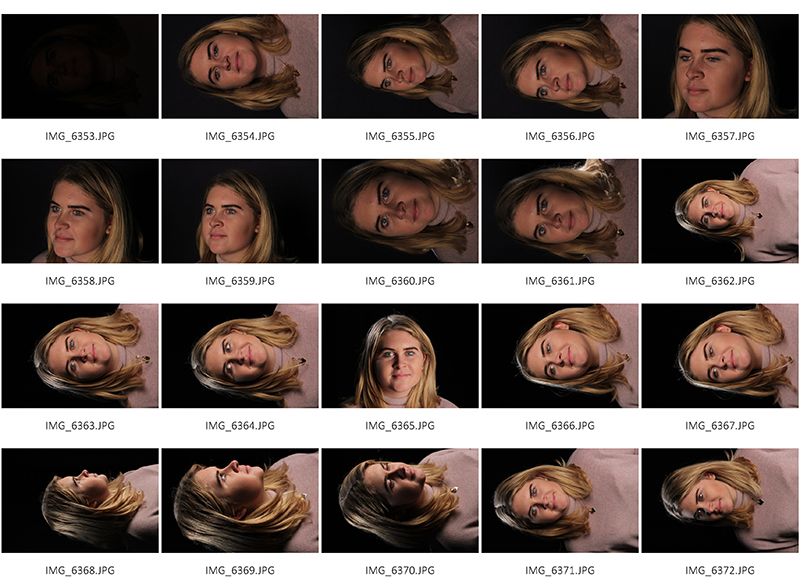
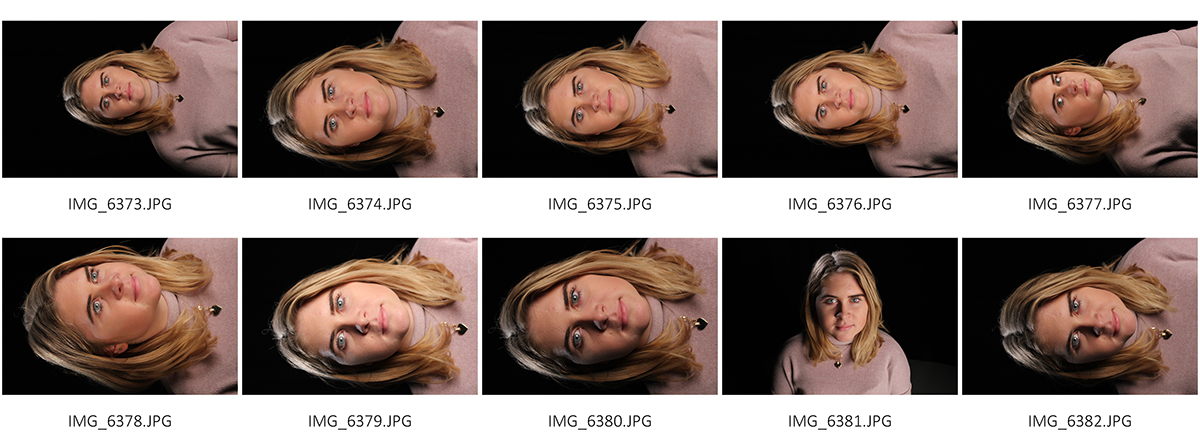
For this shoot, I experimented with three-point lighting which includes a main light, a secondary light and a back light.
I used a black back drop so my subjects stood out and to give me the best possible opportunity to get the best results and so you can evidently see the three uses of lighting.

The point of three-point lighting is to create a direct, pleasing and realistic light on your subject. By using three separate lights you have complete control on how the subject is illuminated. Due to this, I found it much easier to get an even distribution of light on my model and therefore made for a better outcome because the subject’s outline was clearly evident while the technique remains relatively simple.
I began with just the key light to see the influence it had on my subjects appearance, however, the side of my models face which wasn’t exposed to a light was getting lost in the black backdrop so I therefore experimented using both the key light and fill light which illuminated the whole of the subject.
I then tried out using just the soft-light box – they fill light which made the face stand out but still crated some shadows without the help of the key light to drown the shadows out.
After using both the key and secondary light, I moved on to the back light which face my subject a halo-like look as the light was being cast onto the back of her head and shoulders and automatically, the subject looks more three dimensional. In addition, the audience can see the outlines more clearly and there are more highlights in comparison to the previous shadows achieved from the other lights.
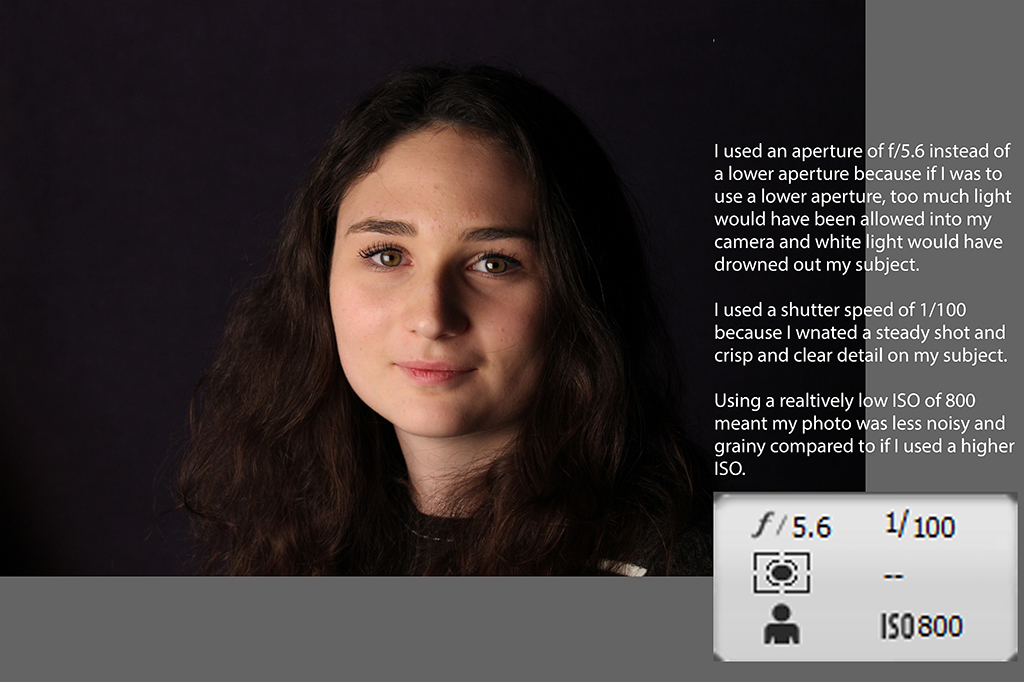
I really enjoyed doing this shoot because I now understand more about three-point lighting and what the purposes are of each light involved in the technique. I believe I need better knowledge about what settings are best for each light.
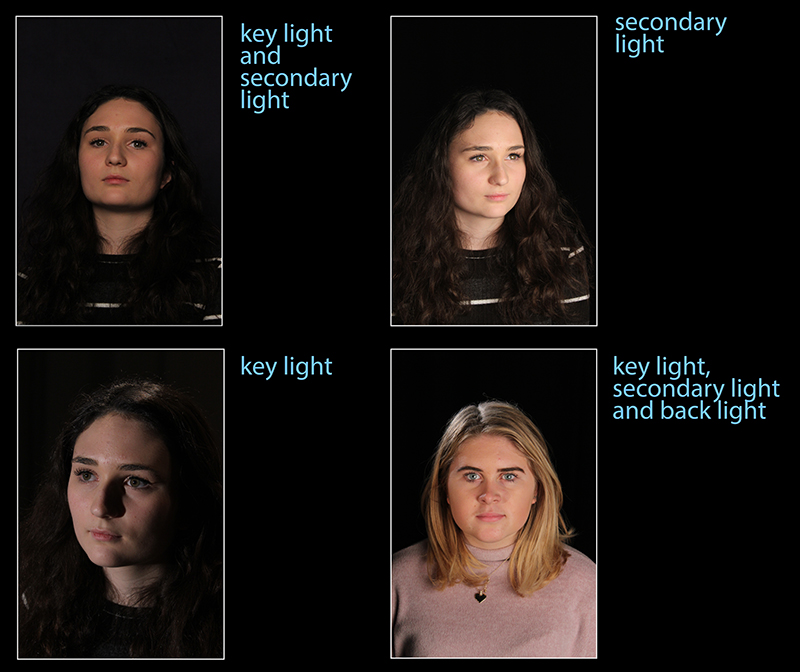
 When editing these images, I experimented with black and white, brightness and contrast as well as levels but was particularly attracted to the way the ‘curves’ features made the images look. I then came across the ‘photo filter’ editing technique and really liked the futuristic look the different colours gave the appearance of each photo. They edits look very unrealistic and this is what I wanted to achieve to show juxtaposition between the idea of realism which three-point lighting gives compared to the unrealistic, futuristic look my edits portray.
When editing these images, I experimented with black and white, brightness and contrast as well as levels but was particularly attracted to the way the ‘curves’ features made the images look. I then came across the ‘photo filter’ editing technique and really liked the futuristic look the different colours gave the appearance of each photo. They edits look very unrealistic and this is what I wanted to achieve to show juxtaposition between the idea of realism which three-point lighting gives compared to the unrealistic, futuristic look my edits portray.
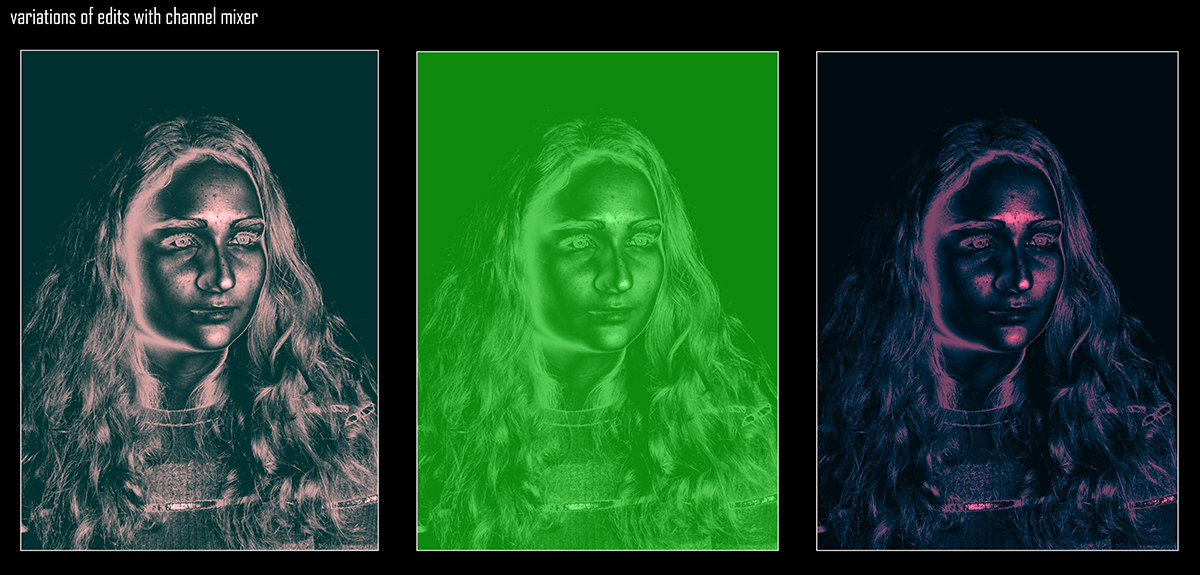
Experimental Edit:
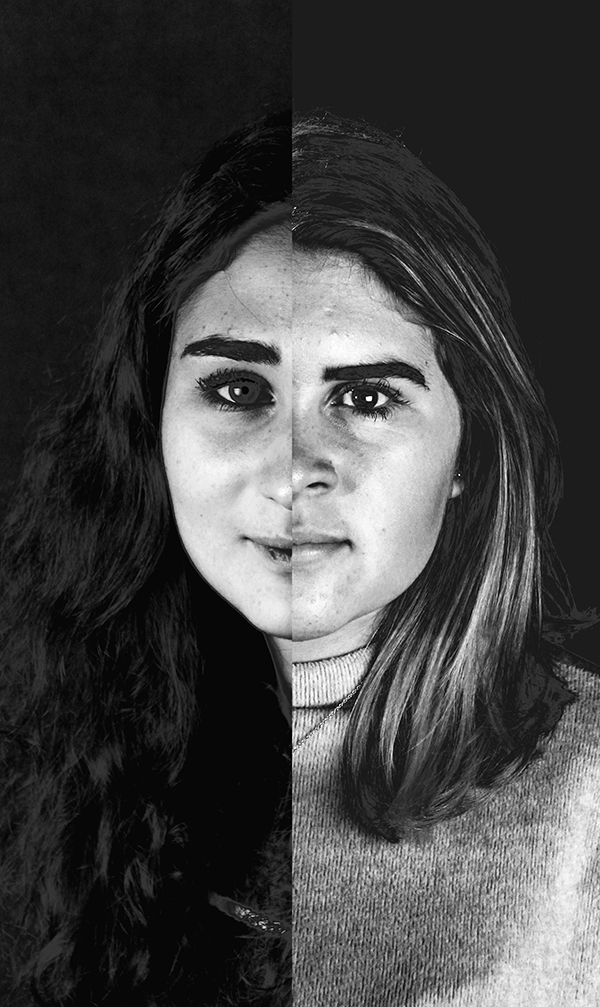
For these particular edits which look very metallic and almost like an x-ray, I got my inspiration from the house duo, Disclosure and their logo as well as their artwork on album/EP covers. The art really fascinates me and I think it is a great and unique design which I wanted to try to replicate in my edits.
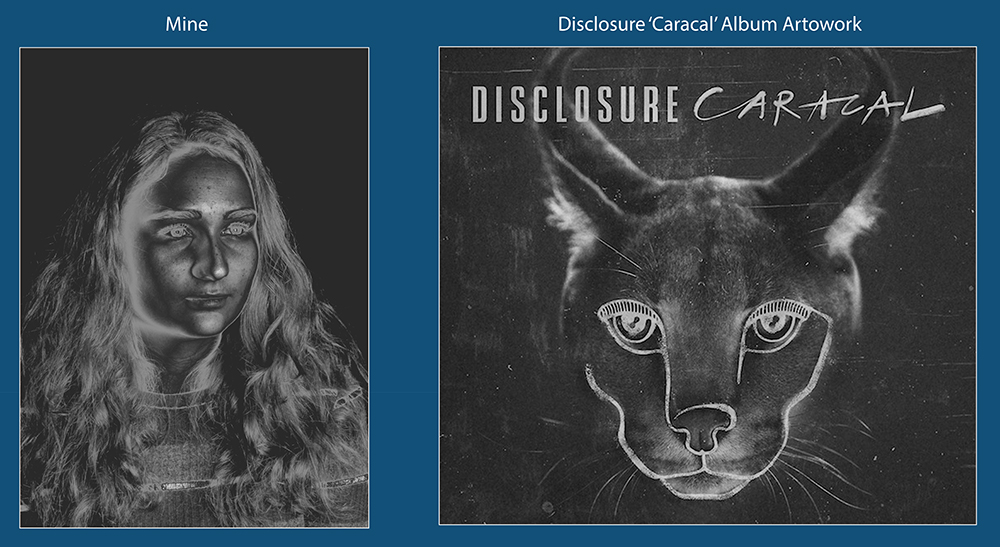

Next, I was inspired by Andy Warhol within my Disclosure inspired series. I was inspired by Warhol’s pop-art, in particular his collages of 4 images.
I wanted this edit to look very unusual and perhaps a bit uncomfortable for the audience to look at by playing around with proportions, shapes, sizes and colour pairings.
